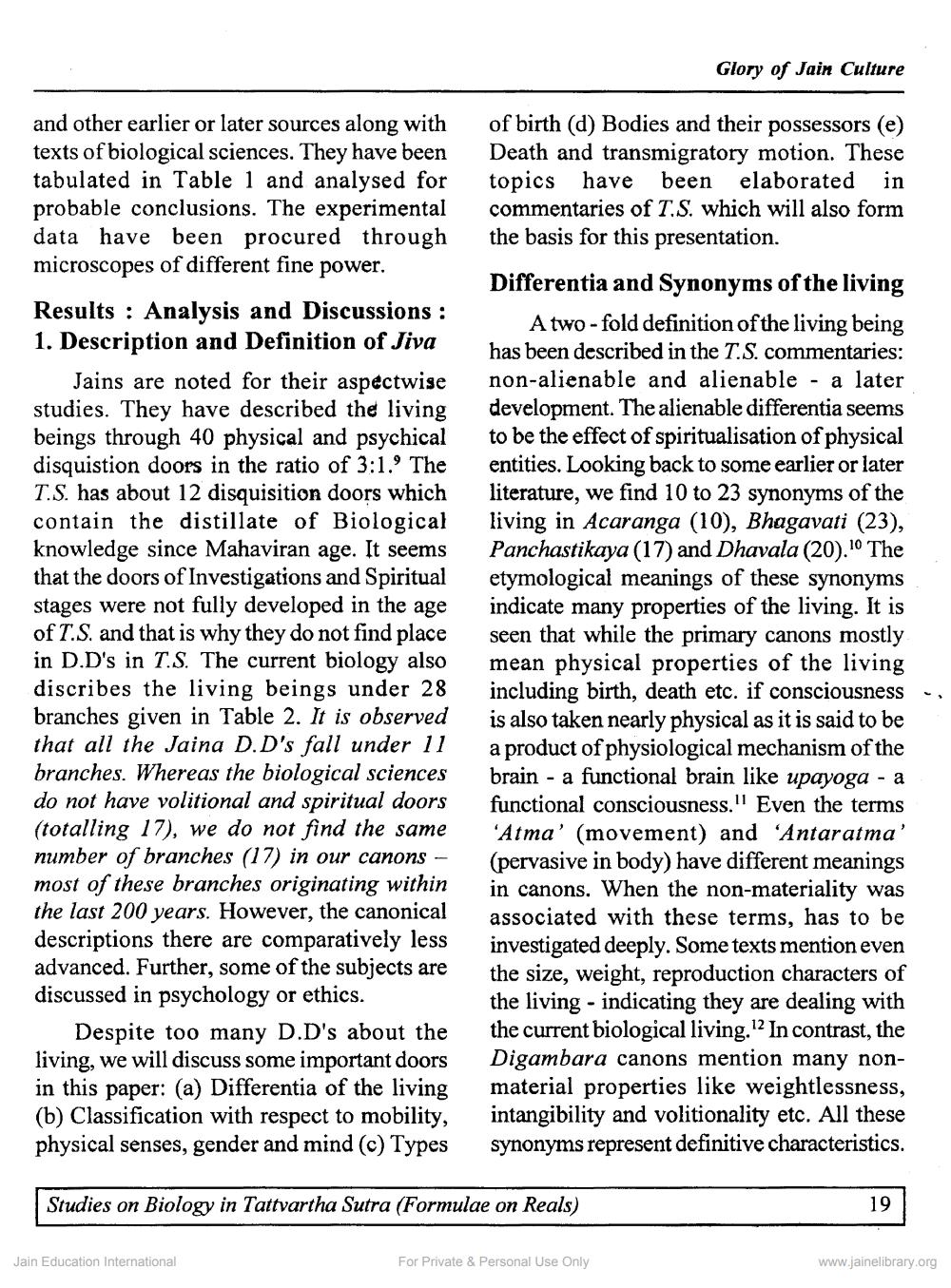Book Title: Studies on Biology in Tattvartha Sutra Author(s): N L Jain Publisher: Z_Sumanmuni_Padmamaharshi_Granth_012027.pdf View full book textPage 3
________________ Glory of Jain Culture and other earlier or later sources along with texts of biological sciences. They have been tabulated in Table 1 and analysed for probable conclusions. The experimental data have been procured through microscopes of different fine power. of birth (d) Bodies and their possessors (e) Death and transmigratory motion. These topics have been elaborated in commentaries of T.S. which will also form the basis for this presentation. , Results : Analysis and Discussions : 1. Description and Definition of Jiva Jains are noted for their aspectwise studies. They have described the living beings through 40 physical and psychical disquistion doors in the ratio of 3:1.9 The T.S. has about 12 disquisition doors which contain the distillate of Biological knowledge since Mahaviran age. It seems that the doors of Investigations and Spiritual stages were not fully developed in the age of T.S. and that is why they do not find place in D.D's in T.S. The current biology also discribes the living beings under 28 branches given in Table 2. It is observed that all the Jaina D.D's fall under 11 branches. Whereas the biological sciences do not have volitional and spiritual doors (totalling 17), we do not find the same number of branches (17) in our canons - most of these branches originating within the last 200 years. However, the canonical descriptions there are comparatively less advanced. Further, some of the subjects are discussed in psychology or ethics. Despite too many D.D's about the living, we will discuss some important doors in this paper: (a) Differentia of the living (b) Classification with respect to mobility, physical senses, gender and mind (c) Types Differentia and Synonyms of the living A two-fold definition of the living being has been described in the T.S. commentaries: non-alienable and alienable - a later development. The alienable differentia seems to be the effect of spiritualisation of physical entities. Looking back to some earlier or later literature, we find 10 to 23 synonyms of the living in Acaranga (10), Bhagavati (23), Panchastikaya (17) and Dhavala (20). The etymological meanings of these synonyms indicate many properties of the living. It is seen that while the primary canons mostly mean physical properties of the living including birth, death etc. if consciousness is also taken nearly physical as it is said to be a product of physiological mechanism of the brain - a functional brain like upayoga - a functional consciousness." Even the terms 'Atma' (movement) and Antaratma' (pervasive in body) have different meanings in canons. When the non-materiality was associated with these terms, has to be investigated deeply. Some texts mention even the size, weight, reproduction characters of the living - indicating they are dealing with the current biological living. 12 In contrast, the Digambara canons mention many nonmaterial properties like weightlessness, intangibility and volitionality etc. All these synonyms represent definitive characteristics. Studies on Biology in Tattvartha Sutra (Formulae on Reals) 19 Jain Education International For Private & Personal Use Only www.jainelibrary.orgPage Navigation
1 2 3 4 5 6 7 8 9 10 11 12 13 14 15 16 17 18
